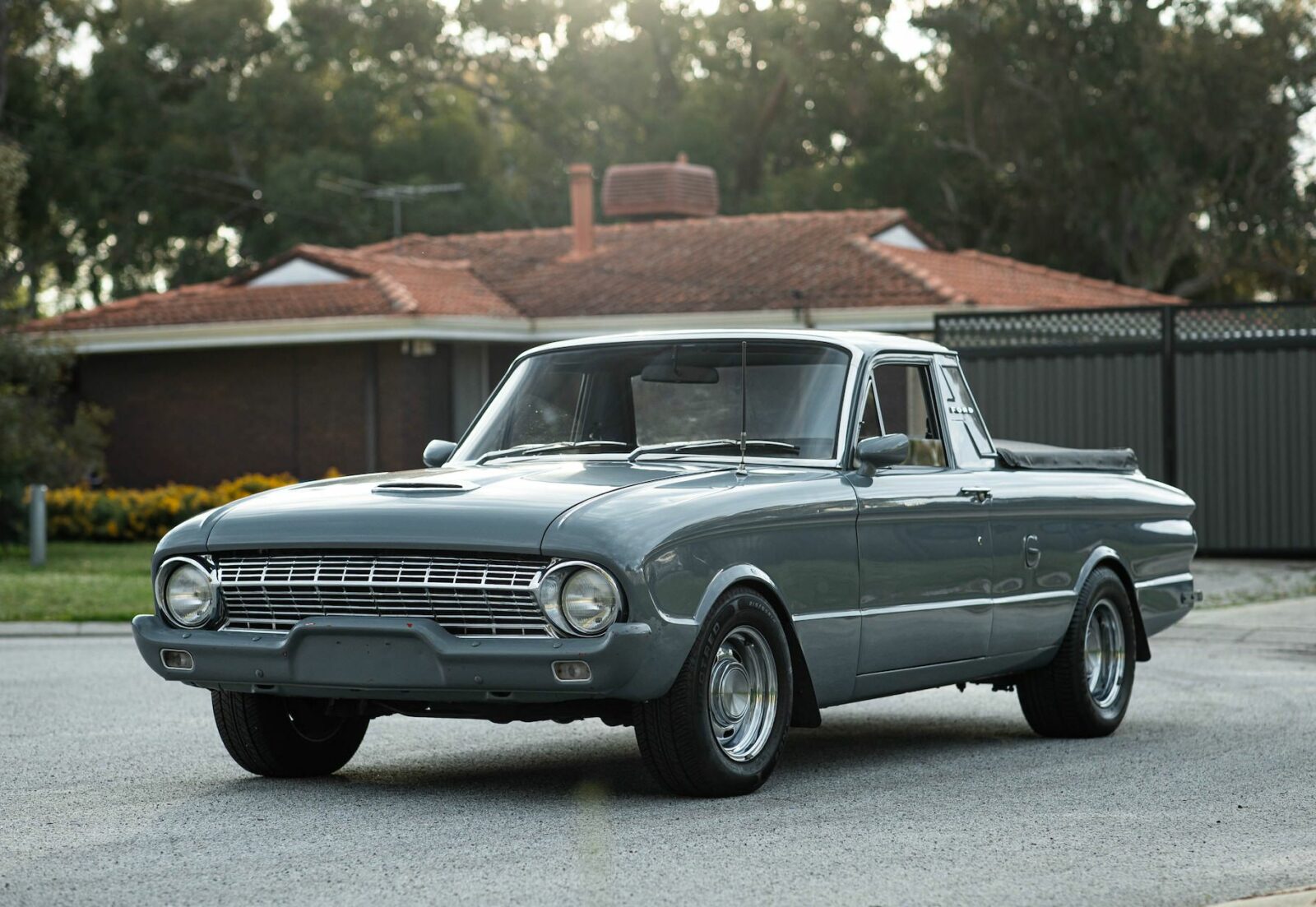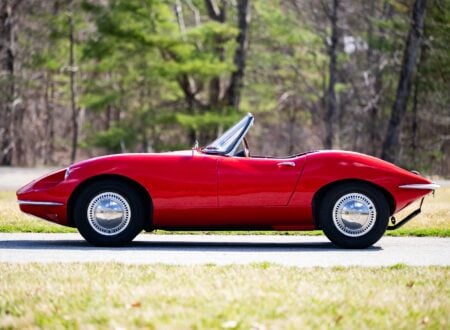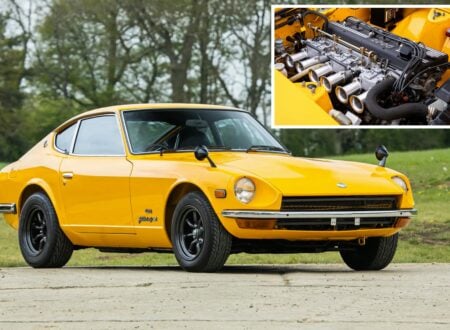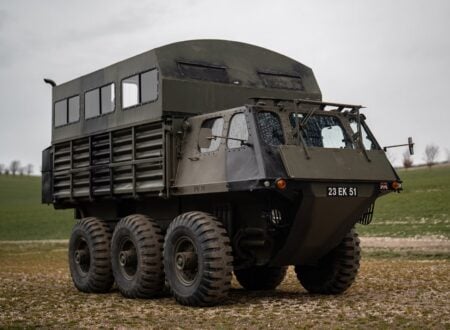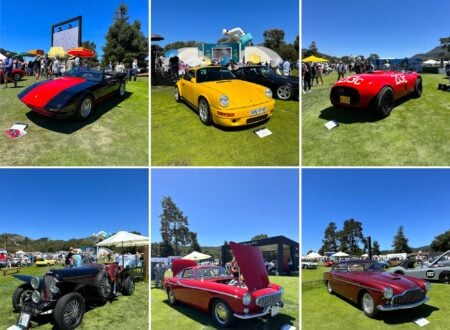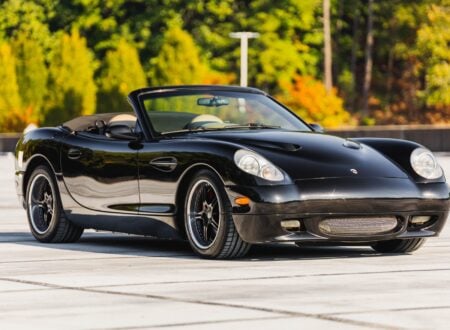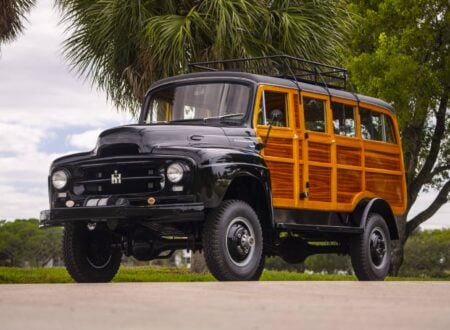This is a 1963 Ford Falcon XL Ute, it’s a car you may never have seen before if you’re not from Australia or New Zealand. This particular XL has been given a raft of discreet upgrades to improve its performance significantly over stock, but its exterior has been kept tastefully subdued.
Under the hood you’ll now find a fire-breathing Ford small block 302 cubic inch (4.9 liter) V8 topped with a Holley carburetor, and it sends power back through a stout Ford 9-inch live axle rear end. The car is now being sold from 27 year family ownership out of Armadale in Perth, Western Australia.
Fast Facts – The Ford Falcon XL Ute
- Released in August of 1962, the Ford Falcon XL succeeded the XK Falcon in the Australian market. This model marked the second generation of the Falcon line in Australia, reflecting a shift towards tailoring American designs to Australian conditions and customer preferences.
- The XL featured notable design changes from the XK, with a refreshed grille, a new hood design, distinct badging, upgraded suspension, a new clutch, a new starter motor, and an improved carburetor. Station wagons in this series also benefited from a reshaped roofline, offering improved rearward visibility.
- Ford broadened the XL Falcon range to encompass sedans, station wagons, utilities (utes), and panel vans. Trim levels were expanded to the base Falcon, Falcon Deluxe, and the top-tier Falcon Futura, with the Futura standing out as the luxury offering.
- Engine choices for the XL Falcon were the 144 cubic-inch (2.4 liter) six-cylinder and an optional, more potent, 170 cubic-inch (2.8 liter) six-cylinder. While a three-speed manual transmission came standard, buyers could opt for a two-speed Fordomatic automatic transmission.
- The 1963 XL Falcon you see in this article has been significantly upgraded, it’s now powered by a Ford 302 V8 sending power back through a Ford C4 3-speed automatic transmission and 9-inch rear end – meaning it’s much faster than it ever would have been from the factory.
The Australian Ford Falcon XL
Introduced in August 1962, the Ford Falcon XL followed in the footsteps of its predecessor, the XK Falcon. As the second generation of the Falcon line in Australia, the XL represented a shift in Ford Australia’s strategy. Recognizing the different demands of the Australian consumer, Ford Australia began adapting the American-designed Falcon to better serve their local market.
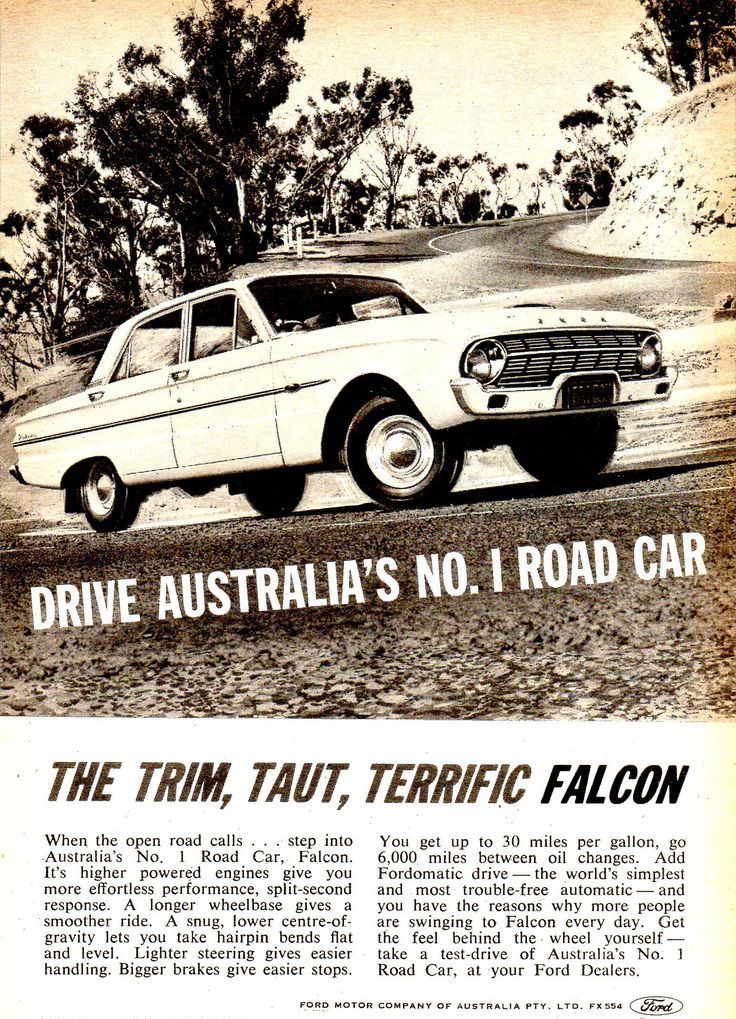

One of the most obvious changes was in the car’s exterior. The XL came with a revamped grille, a redesigned hood, and distinct badges that differentiated it from the earlier XK. Moreover, Ford reshaped the roofline for the station wagons in the XL series, aiming to improve rearward visibility for the driver when reversing.
As with the XK, the number of variants of the XL was lengthy in order to appeal to as many Australian buyers as possible. Ford offered the model as a sedan, station wagon, utility vehicle (referred to as a “ute” in Australia), and a panel van.
To cater to different budget levels within the market Ford introduced various trim levels: the base Falcon, the mid-tier Falcon Deluxe, and the premium Falcon Futura. The inclusion of the Falcon Futura marked Ford’s attempt to tap into a more luxurious segment and better compete with their homegrown rivals at Holden.
Under the hood, the XL Falcon came equipped with a 144 cubic-inch (2.4 liter) inline six-cylinder engine. For those seeking more power, Ford also offered an optional 170 cubic-inch (2.8 liter) inline six, no V8s were offered in this series as fuel economy was deemed more important than outright power.
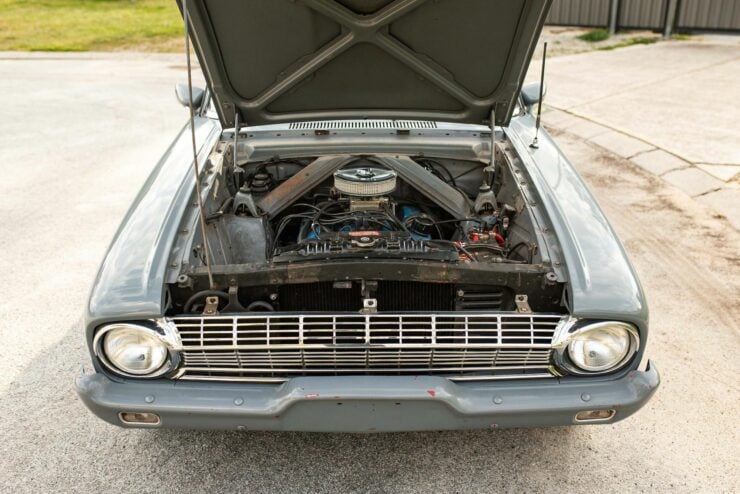

Transmission choices included a standard three-speed manual, with the option to upgrade to a two-speed Fordomatic automatic.
Although it was never developed for racing, the XL Falcon enjoyed surprising successes on the racetrack. The XL saw action in the 1962 Armstrong 500 race held at the Phillip Island circuit in Victoria, Australia. The race was utterly dominated by the Falcon XL, in fact the first four cars across the finish line were all Falcon XLs with a solitary Holden EJ coming across the line in fifth.
The Ford vs Holden rivalry in Australia was just heating up at this time, it would reach fever pitch in the 1970s and 1980s, it continued through the 1990s and well into the 2000s.
The Falcon XL was replaced by the Falcon XM in 1964, this new model was closely based on its forebear and it continued the trend of moving the model family’s styling away from that of the contemporary American Falcon.
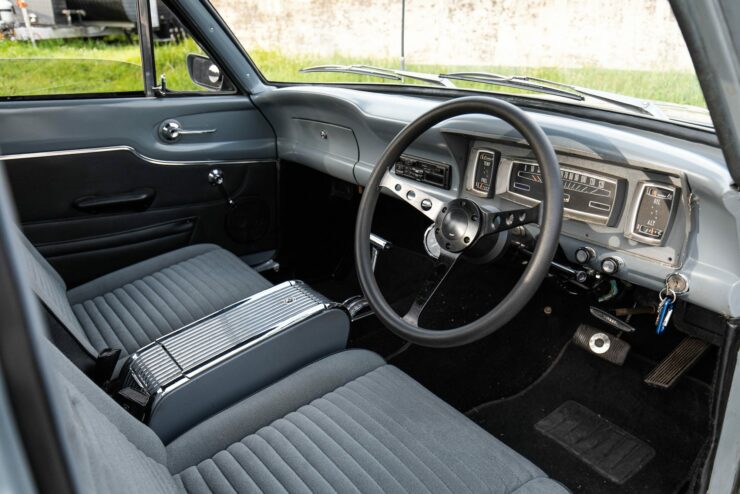

The 1963 Ford Falcon XL Ute Shown Here
The car you see here has been significantly modified from the specification it was in when it left the factory. The original straight-six is now long gone, replaced by a Ford 302 V8. While the larger 170 cubic inch version of the inline-six made just 101 bhp, the 302 V8 is capable of well over double this amount, even without significant tuning.
This new engine has a Holley carburetor fitted and it sends power back through a C4 3-speed automatic transmission and Ford 9-inch rear end. In the interest of safety a Superoo collapsible steering column and steering box have been installed as well as front disc brakes and a brake booster.
Larger wheels and tires have also been fitted and interestingly the dashboard has been upgraded with a Ford ZB Fairlane unit from later in the 1960s. A separate rev counter and water temperature gauge are now mounted to the dashboard to allow the driver to keep a closer eye on the vitals and a Clarion radio cassette head unit is also installed.
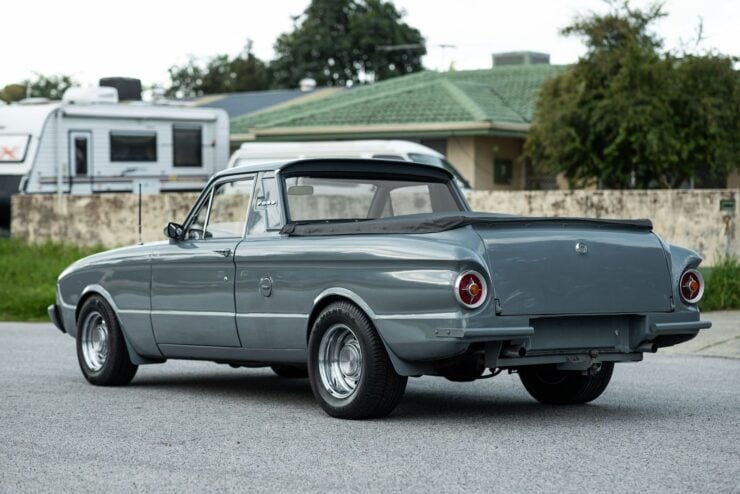

The original paintwork was replaced years ago with an understated grey paint scheme and the vehicle has been partially dechromed. It’s now a sleeper in every sense of the word, with few anticipating that the car is now vastly quicker than its straight-six powered siblings from the early 1960s.
This XL Falcon is now being offered for sale on the Collecting Cars platform out of Armadale in Perth, Western Australia. If you’d like to read more about it or register to bid you can visit the listing here.
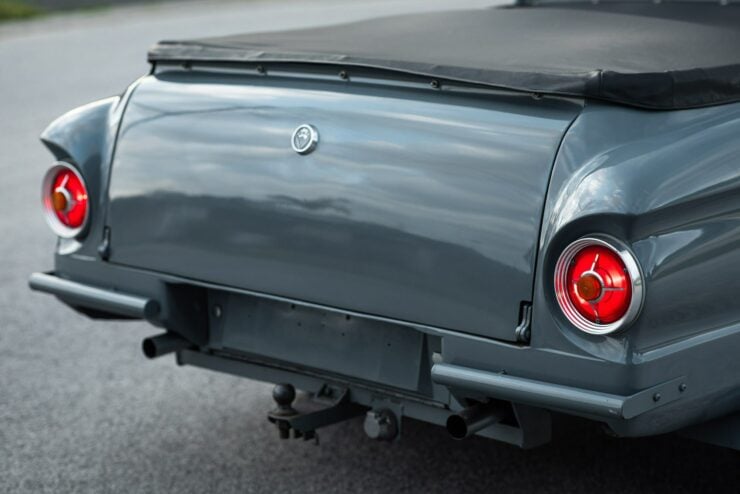
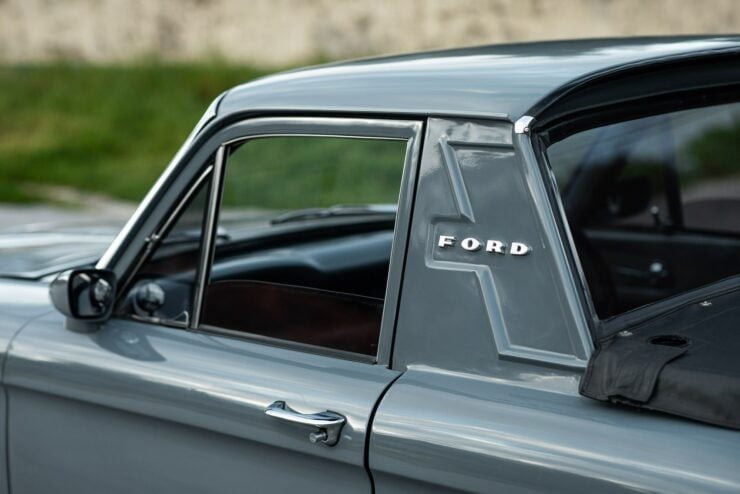
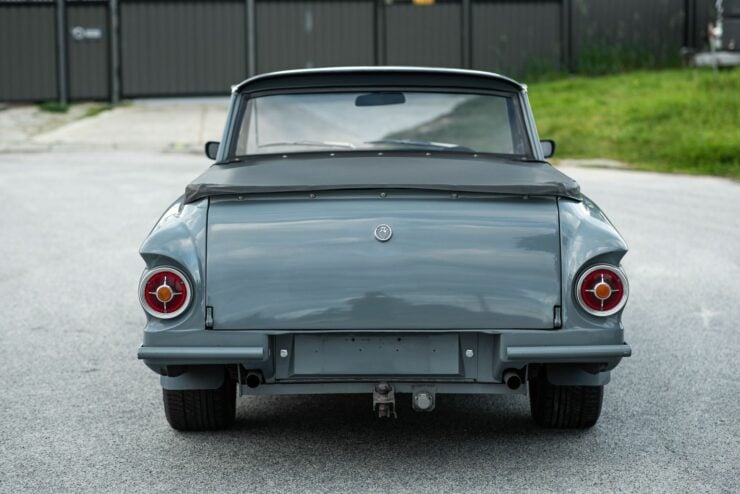
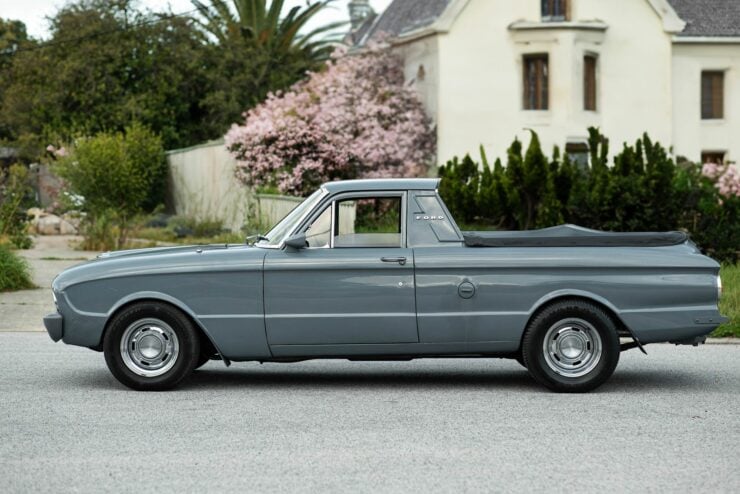
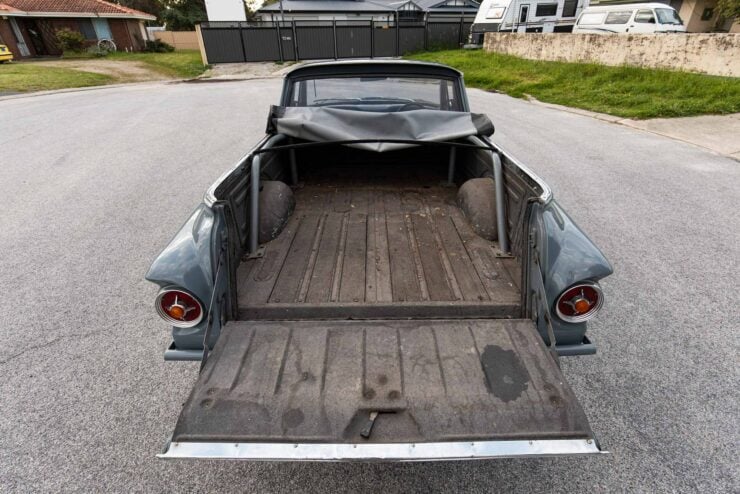
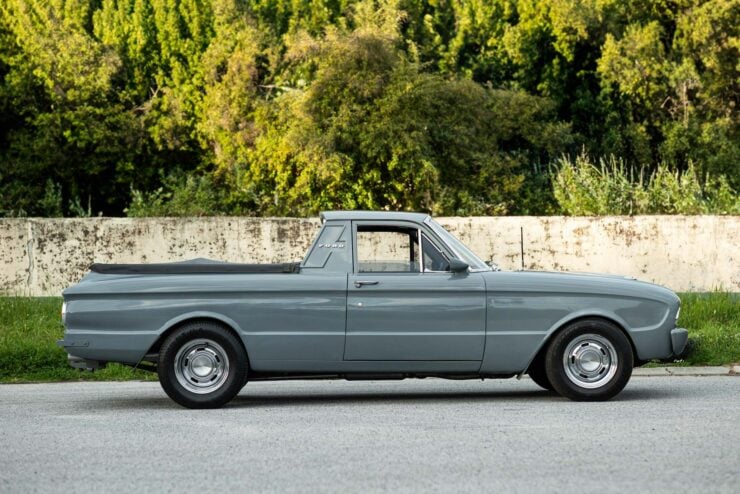
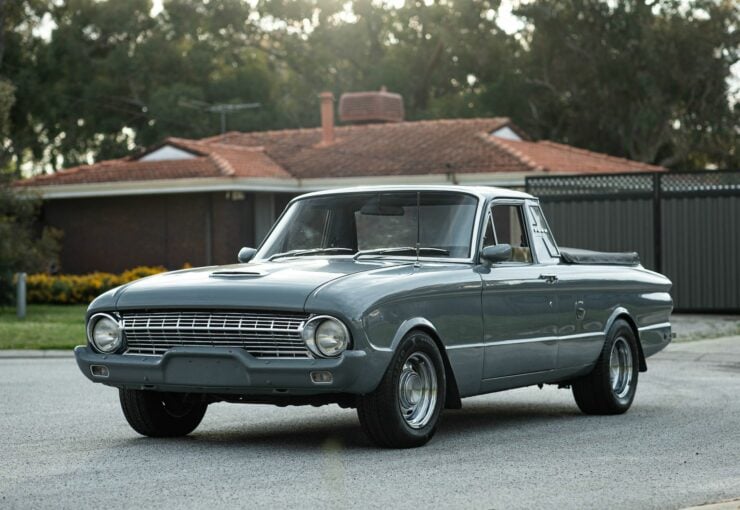
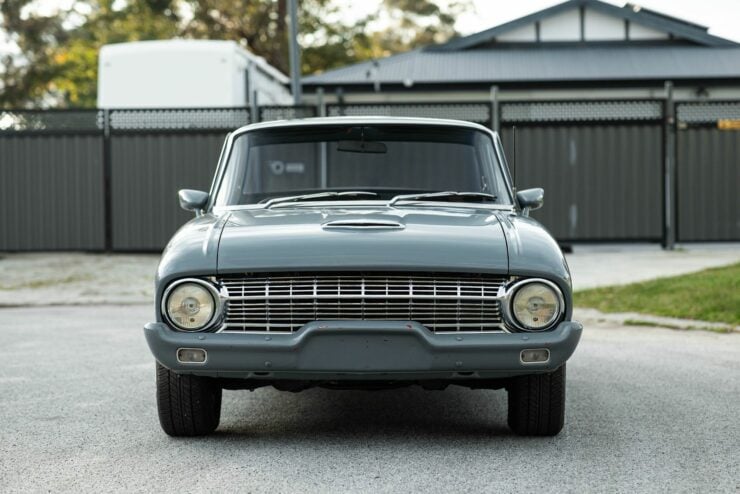
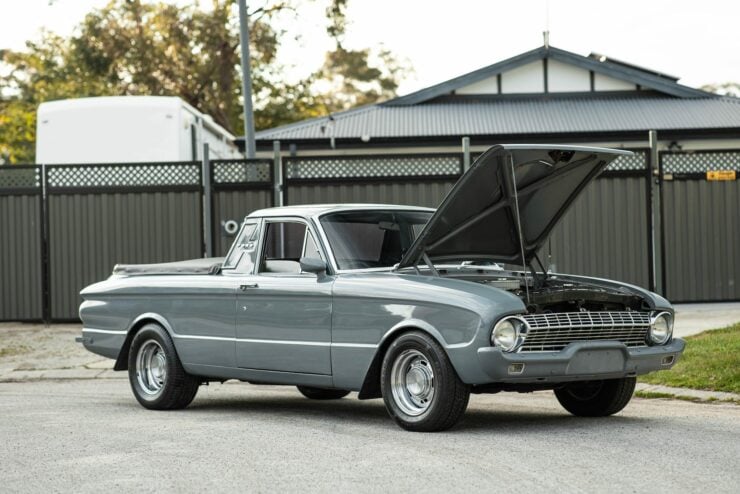
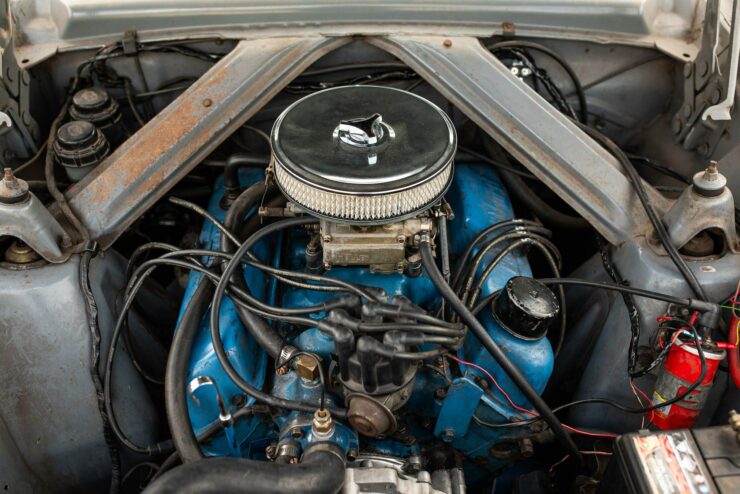
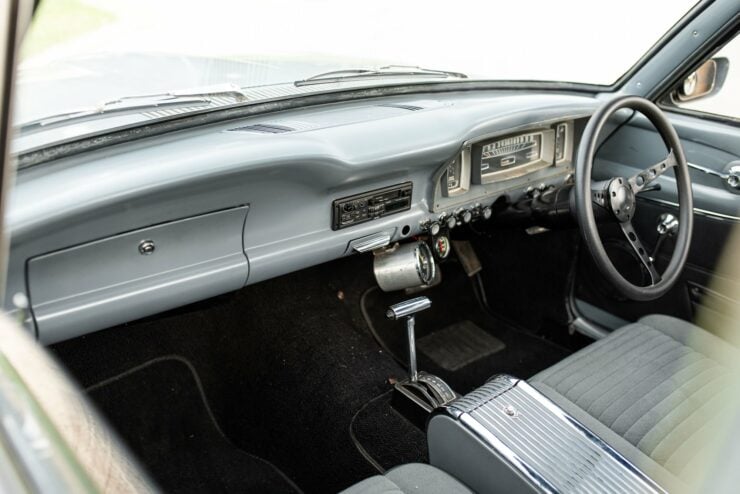
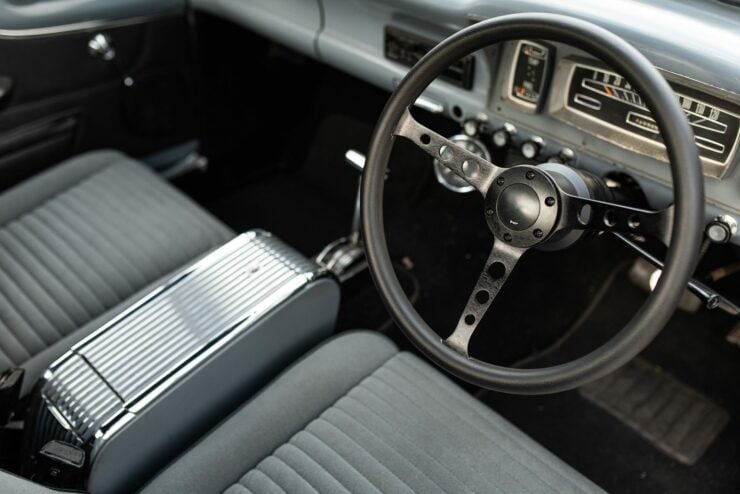
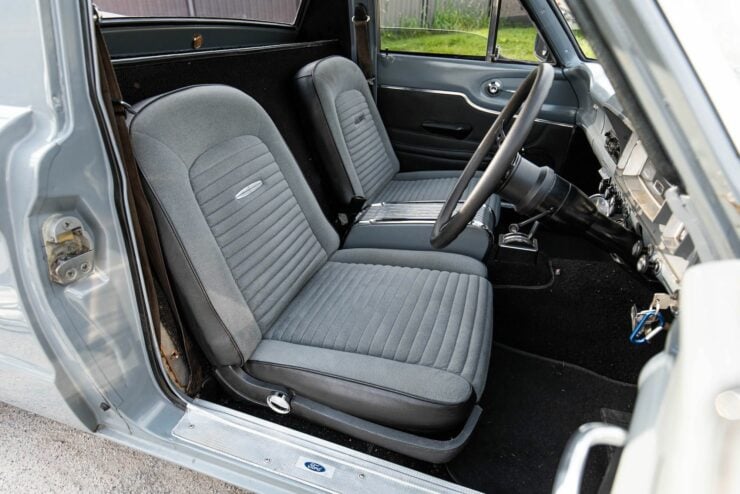
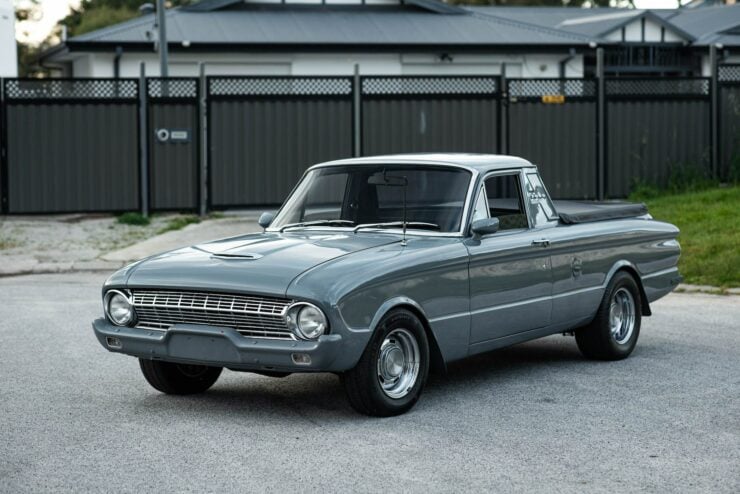
Images courtesy of Collecting Cars

